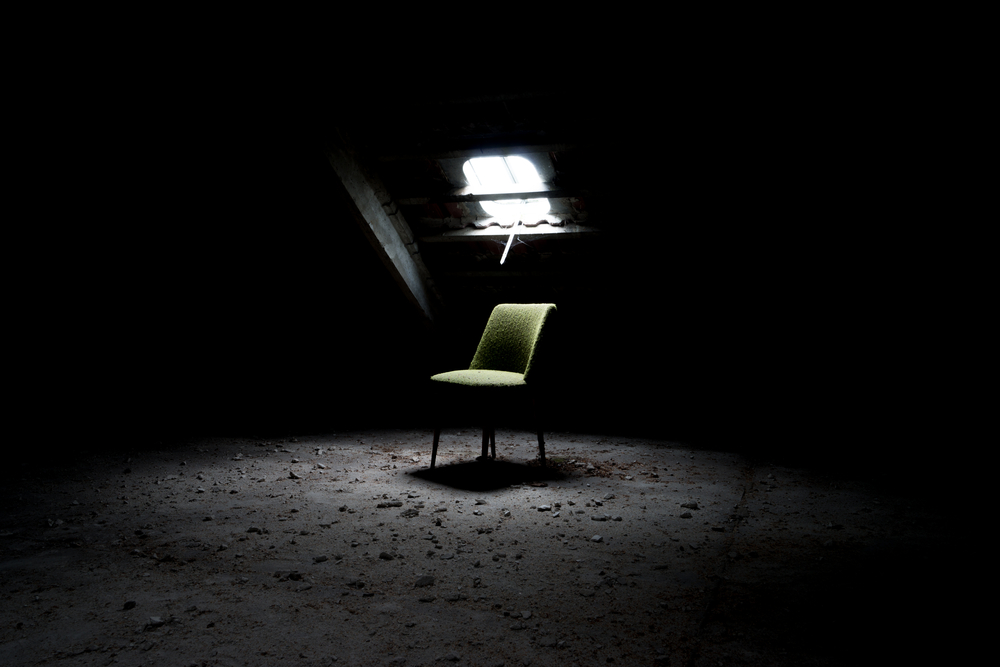
Sometimes it takes an interested party to discover things that have remained hidden throughout the years. Photographer Bryan Sansivero has gone on a special quest to find unexplored spaces and abandoned houses.
Deserted buildings usually house many secrets and untold stories. This farmhouse, located in Long Island, has been uninhabited for more than 40 years. As Sansivero set foot in it for the first time, he knew he was in for a ride.
For more of Bryan Sansivero’s great work, check out his Instagram profile via https://www.instagram.com/st.severus/
The place was perfect for him to carry on his creative photography project. His lens captured the passing of time and a few other surprises. Now it’s time for you to discover them!
1. Located in a suburb outside New York City
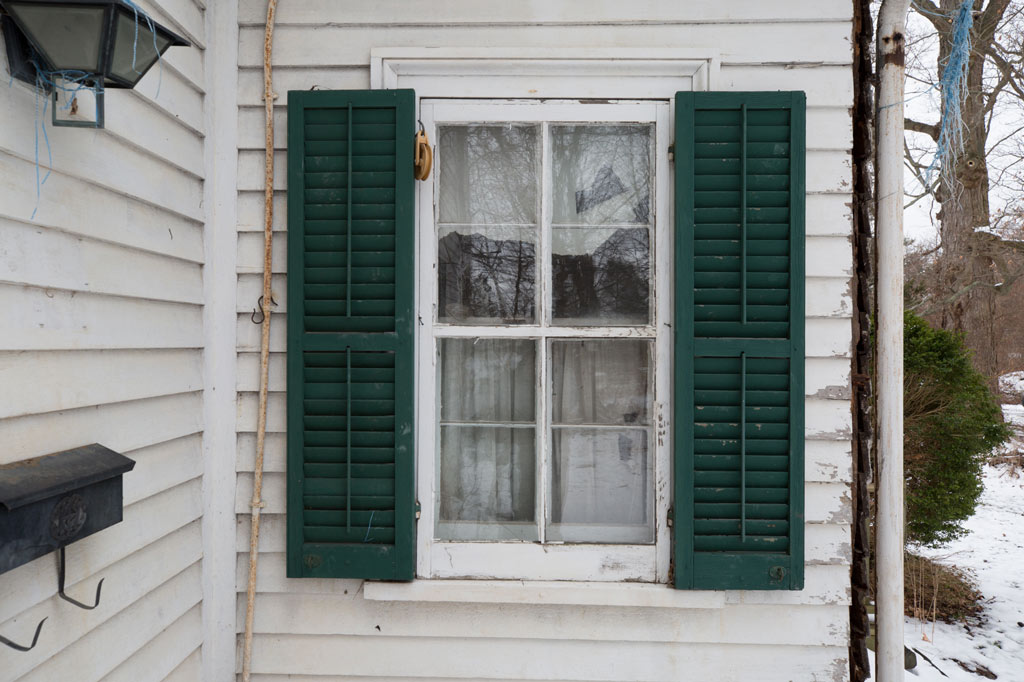
Don’t even think for a minute that this house lies in the middle of nowhere. It is located in Commack, a New York City suburb that is part of Suffolk County.
This suburb is actually considered a great place to live due to its great schools, nice parks, numerous restaurants and unique coffee shops. So how could this once beautiful house go unnoticed for so long?
According to public records, a woman named Marion Carll left the house to the Commack School Board and District with the promise that it would be used for educational and historical purposes. However, her wish hasn’t been fulfilled yet.
2. Like traveling through time

Following an unknown road and feeling the thrill of discovering something unique, Bryan Sansivero entered the house with that particular feeling that it would be something special.
As his specialty is to shoot images of deserted, unoccupied buildings, his level of excitement was through the roof. Nevertheless, being able to enter the house took some serious effort: Sansivero had to get a special permit to access it and commit to take pictures that would later serve as record.
Strangely, when he first expressed his intention to enter the house, he was amazed by how few people knew about it, even though it’s part of a prosperous community. It was like a hidden gem.
3. Who was Marion Carll?
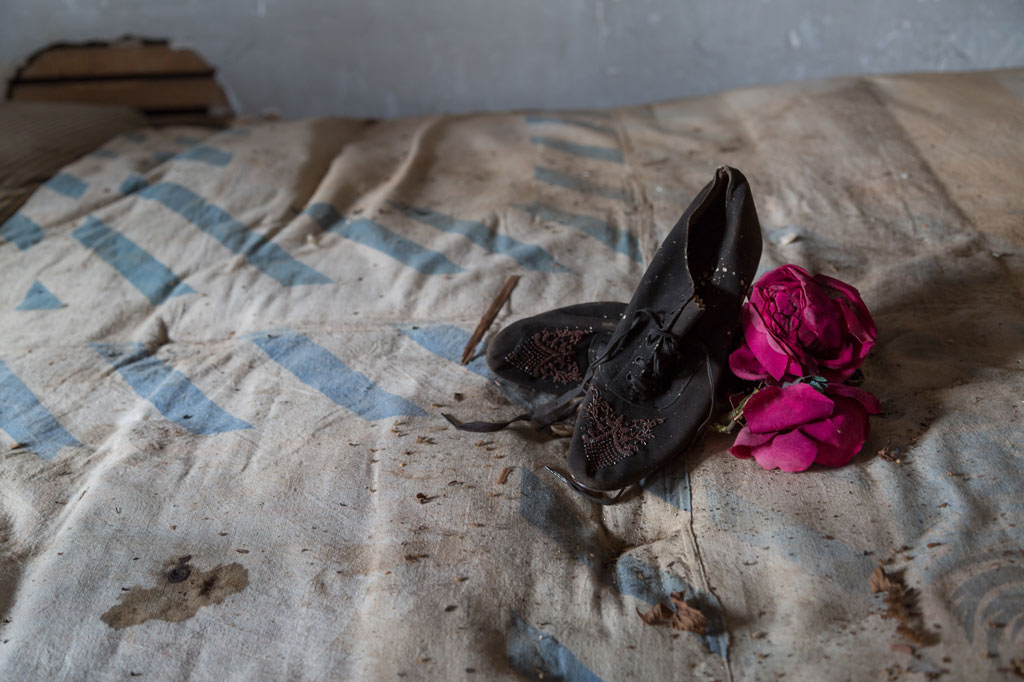
A beloved teacher and a particularly active member of the community, Marion Carll had great influence among locals, mainly thanks to the fact that she founded a grammar school in 1957.
She was also the first teacher in her district to invite parents to become more involved in their children’s education. Thus, there was no surprise when she turned her property over to the school board.
Sadly, the school district has failed to do what was asked of them and have attempted to sell the house many times with no success. Apparently, the maintenance fees are too high for them to finance, which has caused major damage to the house.
4. The front of the house fell into decay
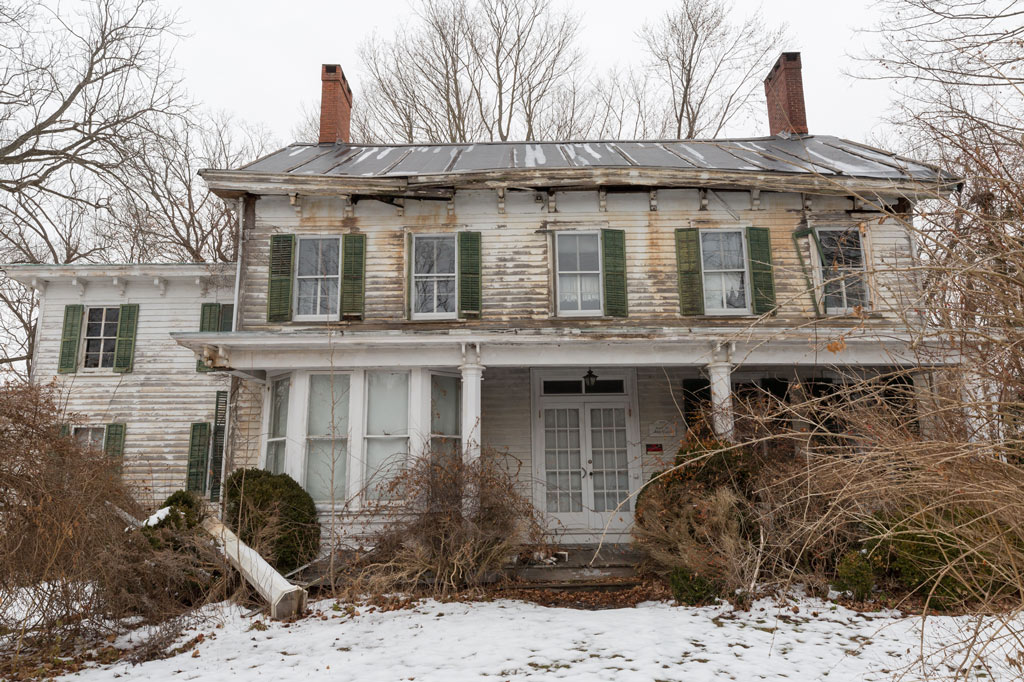
After Marion Carll’s death in 1968, the 9-acre Victorian-style manor became gradually damaged up to the point that some of its best features are now completely gone. The farmhouse, presumably built in the mid-16th century, has sadly been majorly affected by the passage of time.
Some of its columns are now gone, the entrance is almost fully covered by bushes and twigs, and the roof is falling down. To say that this house has been abandoned is an understatement.
Sansivero hopes his work will help raise awareness regarding the state of this historical building and contribute to its rehabilitation.
5. The house is linked to a prominent poet

When Sansivero went through the many photographs and family heirlooms left behind, he stumbled upon an interesting book named “Huntington’s Hidden Past”, written by Kerriann Flanagan Brosky. The book offered many details about the history of the property and it revealed a very interesting fact regarding its previous owners.
The land where the farmhouse stands was property of the Secatougue Indian tribe until 1698. It was then sold to John Skidmore and John Whitman. The latter turned out to be the great-great-great grandfather of Walt Whitman, a poet, essayist, and journalist who is considered one of the greatest American writers of all time.
6. Many things were still untouched
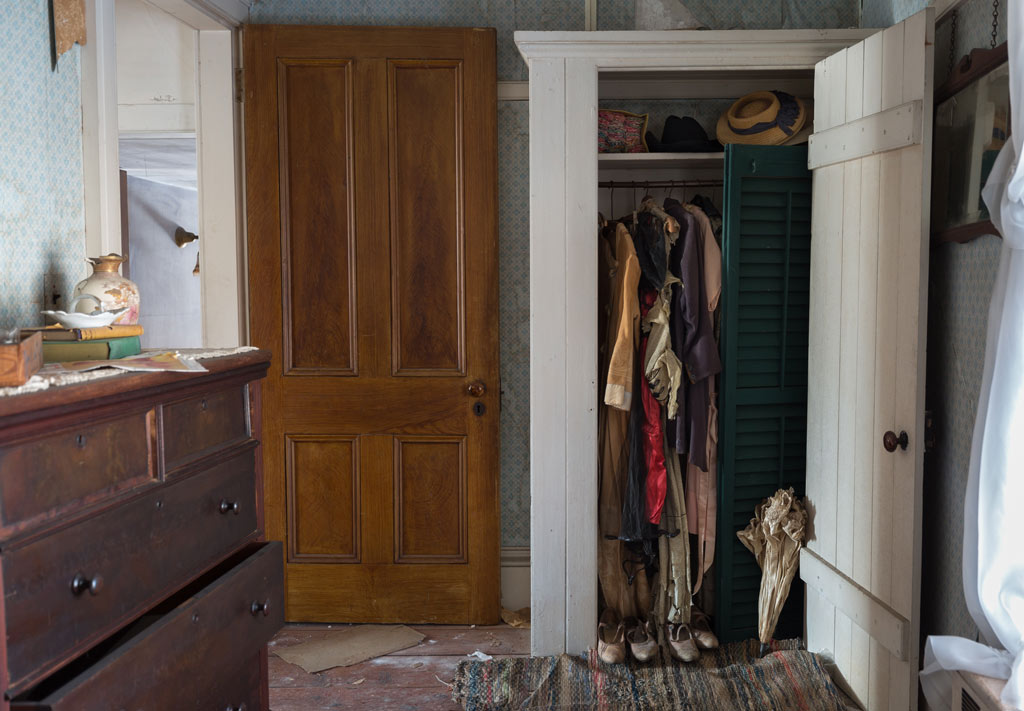
Just like the books and photographs, the house was full of keepsakes, antiques and furniture from the 19th century. It’s clear that Marion Carll made an effort to preserve as many original objects as possible.
Entering the rooms felt like a trip back to 1860 instead of 1968, which was actually the year she passed. Of course, leaving things the way they originally are is not always a great idea, as many things can’t withstand the test of time.
For Sansivero, the experience of finding these relics was overwhelming and a little sad, as he felt like Marion was living among many outdated objects that may have not served their purpose anymore.
7. A place filled with invaluable things
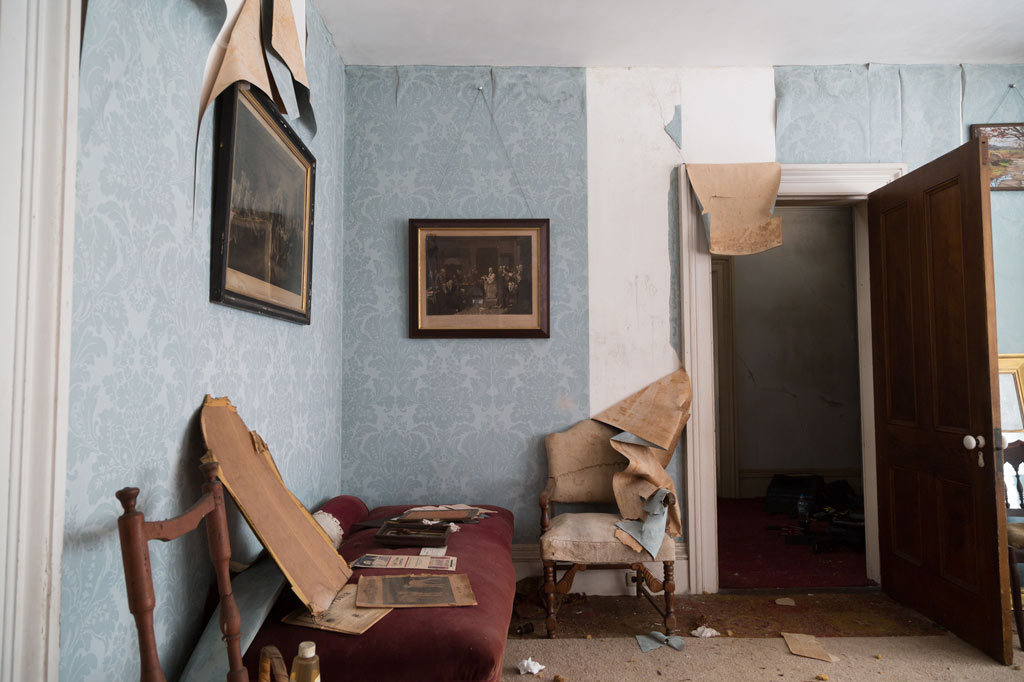
During the times that Sansivero was able to access the property, he discovered many interesting artifacts that withstood the passage of time. Art, furniture, pictures and even the wallpaper were still there, waiting for him to be found.
For him as a photographer, this has been a once-in-a-lifetime experience. In this place, there is invaluable material that speaks of the past in its very own way, and he has been able to witness it all.
Most of what was left in the house was documented by Sansivero, and now his images allow us to take a peek into the intimate life of the Carll’s family and history. Some items have since been removed and, for now, the property doors remain closed and no one is allowed to visit.
8. Careful with the stairs!
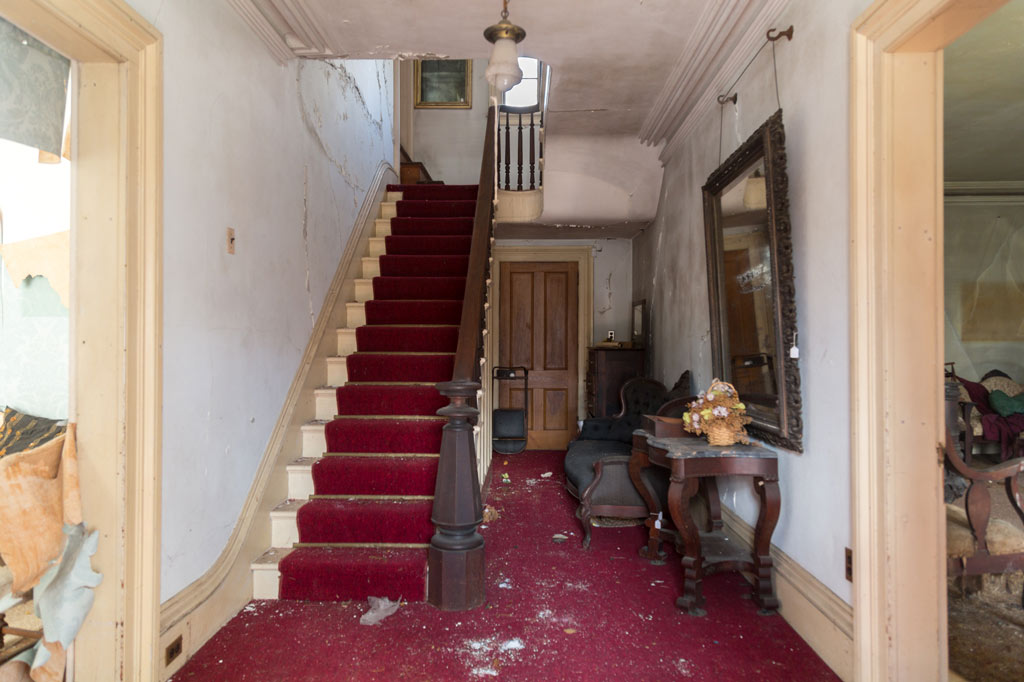
Entering an abandoned house has its risks. Rotten floorboards, the deterioration of the furniture, and the accumulation of dangerous substances are only some of the numerous factors to keep in mind.
For example, this picture shows the main staircase that leads to the bedrooms, which seems to be in “good” condition. However, the set of stairs that goes to the basement collapsed just minutes after Sansivero climbed them back up after taking a first look.
Luckily, he is safe and sound, but he wasn’t able to take any pictures there. It seems like exploring old buildings can be pretty dangerous!
9. Hidden treasures everywhere
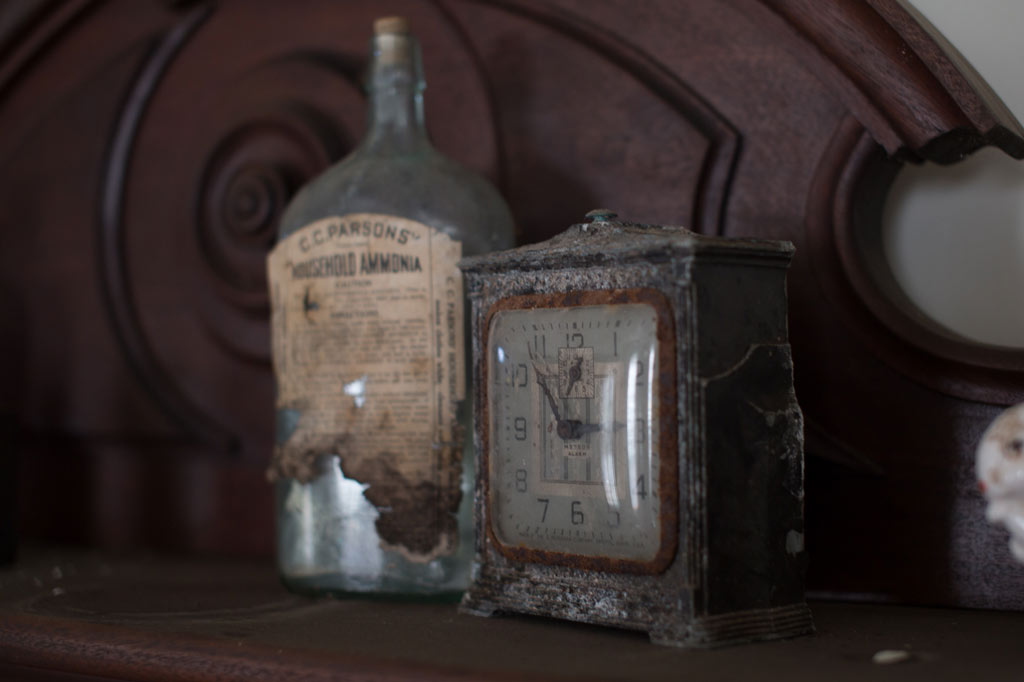
Like frozen in time, Marion Carll’s home is the keeper of many treasures. This includes different items: from kitchen utensils and bedroom linen, to furniture and decor which date back to the 19th century.
It seems like every single thing remained untouched after Carll’s death, which allowed Sansivero to catch an honest glimpse of Carll’s everyday life. For example, this clock and a bottle of C.C. Parsons’ ammonia were placed on a cabinet, covered in cobwebs.
Needless to say, the house feels like a museum. Other rooms, such as the bathroom and the living room, were also documented. Nowadays, many things have been stored away and some pieces are of great interest to vintage collectors.
10. Where are the valuables?
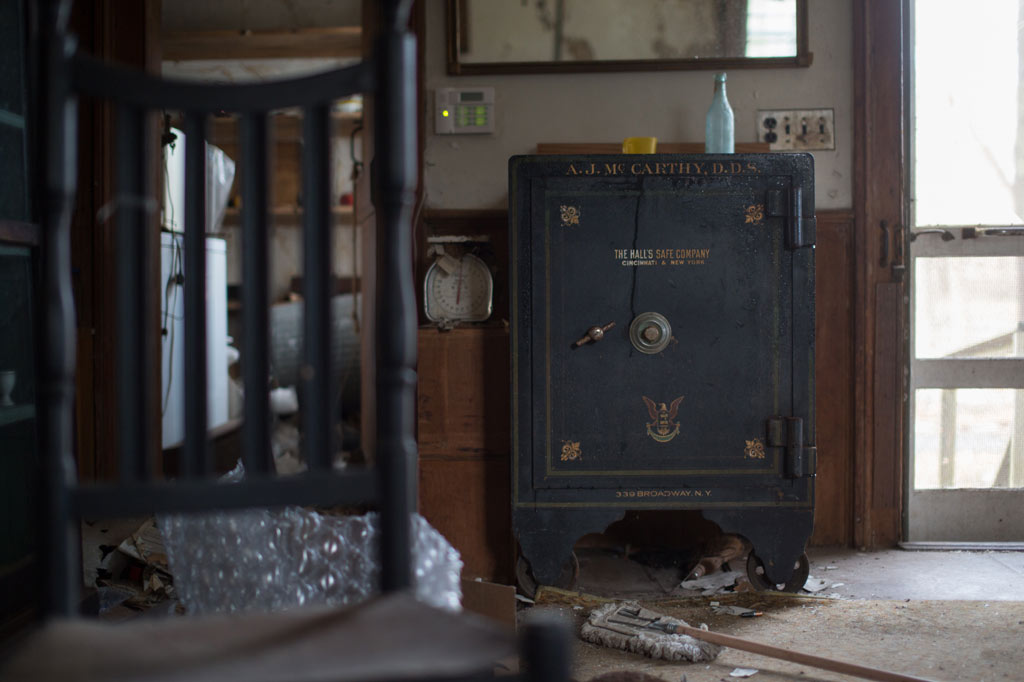
Back in the 19th century, Joseph Hall was one of America’s most prominent figures in the lock and security industry. In 1857, he started his business in Cincinnati, naming it The Halls’s Safe Company.
Fortunately for him, it became one of the most trusted brands in the field at the time, which is why finding a safe from this renowned company at the farmhouse is no surprise.
The funny thing is that the name “A.J. McCarthy, D.D.S.” can be read on the safe, displayed in large golden letters. Apparently, A.J. McCarthy was a faculty member at the University of Buffalo’s Department of Dentistry. How the safe made its way to Marion Carll’s home is still a mystery.
11. The china is in mint condition
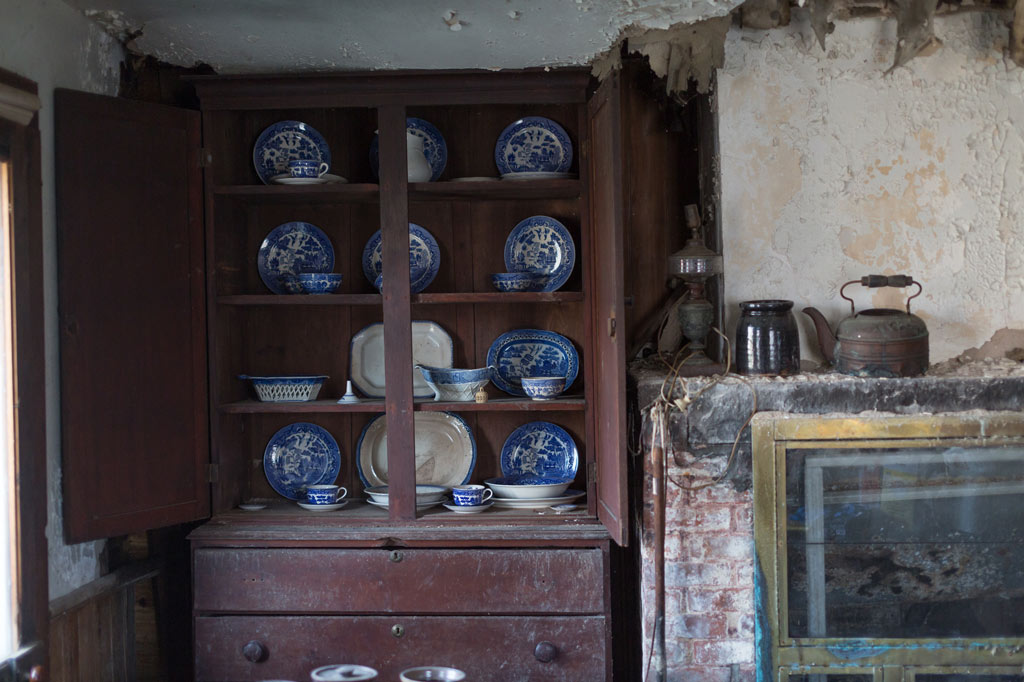
After walking into the kitchen, Sansivero was happily surprised to find a china cabinet with plates that remained intact and unscratched. With a gentle swipe to remove the dust, the porcelain looked as good as new.
As shown in the picture, Marion Carll had a very classic set of tableware, with beautiful patterns in blue and white. Other items shown in the picture are a tea kettle, a ceramic vase and an oil lamp.
Overall, the condition of the kitchen was very poor because the walls were peeling and the ceiling was heavily damaged. However, the cabinet was still in one piece.
12. The magnificent piano
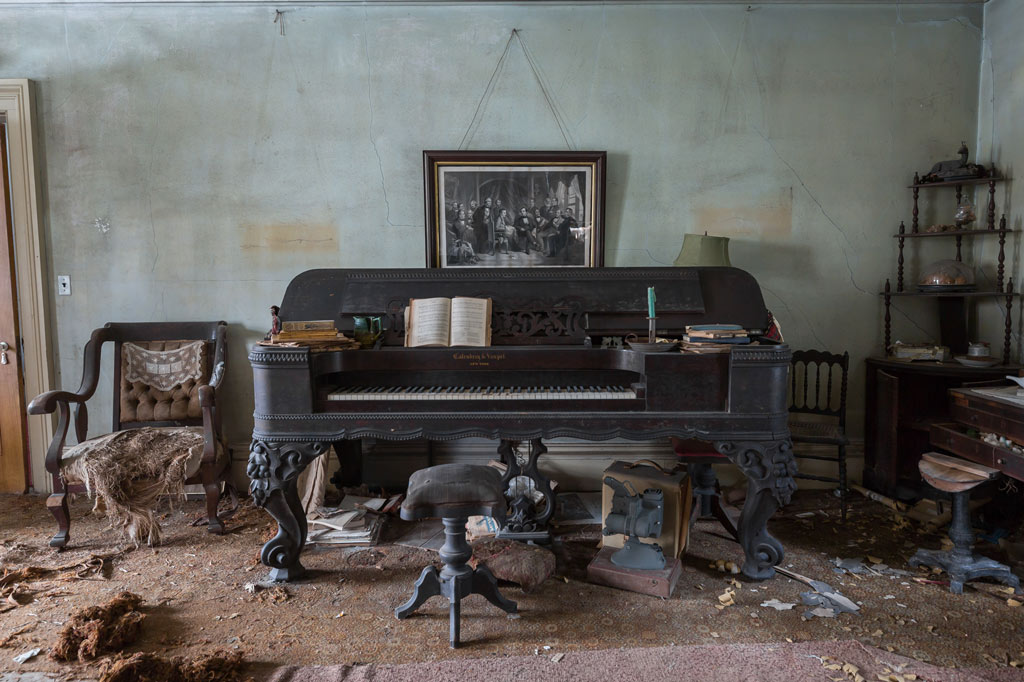
One of Sansivero’s favorite finds is a beautiful piano. Somehow knowing that music was played in this house made perfect sense. In the 19th century, families would gather to listen to music together and the Carlls were no exception.
The way the sheet music lays open on the wooden carved piano allowed Sansivero to know exactly what piece Marion played last. A half-burned blue candle and other books were also found on the piano, which only confirms how much Marion loved to spend time there.
Because of her occupation, we can perfectly imagine how she must have spent hours reading and playing beautiful music in the living room.
13. Crinolines on the wall
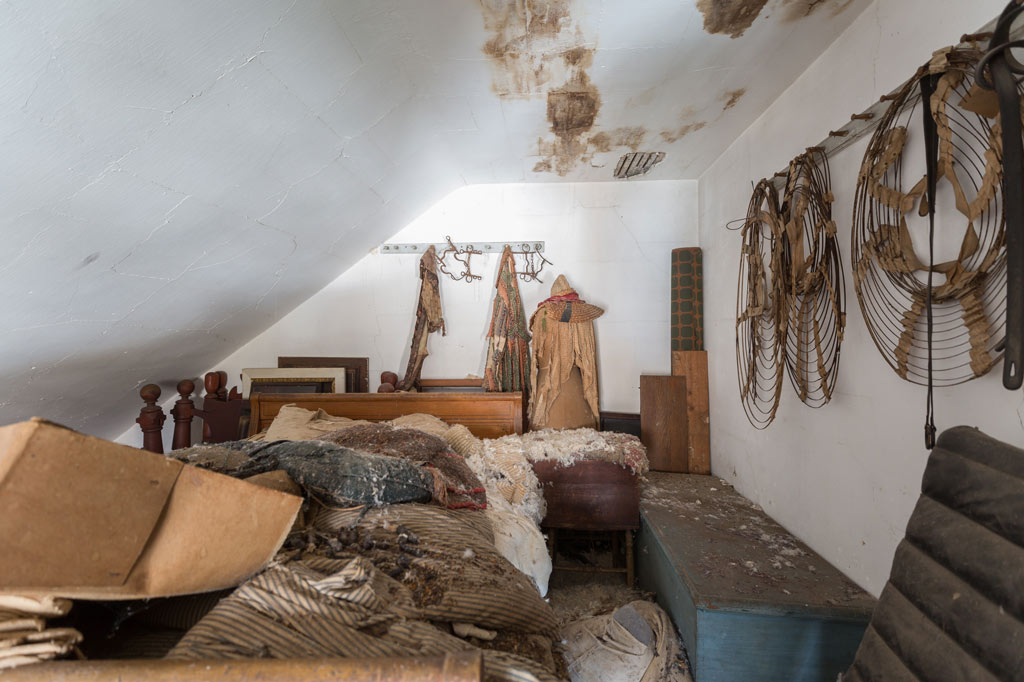
Although Marion Carll died in 1968, many rooms look as if they hadn’t been inhabited in a century. For instance, the room in this picture has some objects that were first invented in 1850. We are talking about the crinolines that are hanging on the wall.
A crinoline is a stiff petticoat that was meant to hold out a woman’s skirt, making it look fluffy and round. It is originally from Paris, but it became very popular in the U.S. among wealthy women and factory workers alike.
It’s funny how these crinolines remain in such good condition despite the passage of time.
14. A teacher’s work station
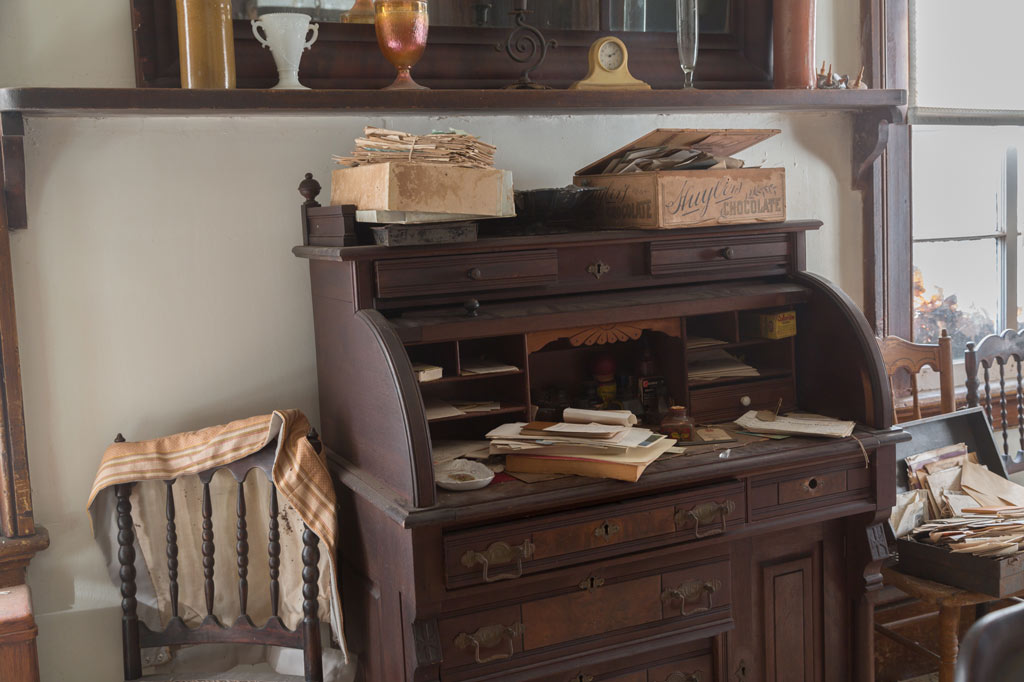
People say that a desk can say a lot about whom you are as a person. There are secrets about yourself that you inadvertently broadcast to people around you. By taking a look at Marion’s desk, we can tell how much she liked writing and teaching.
The wooden desk was left untouched, and we can perfectly imagine Marion standing in front of it, sorting her mail out. She must have sat hours there, planning her grammar lessons and coming out with new ways to teach their students.
It is known that she often had students over at the house, where she loved to teach them about life at the farm. That’s why it’s not surprising that she wanted the farm to be used for educational purposes.
15. The Value of Old Bottles
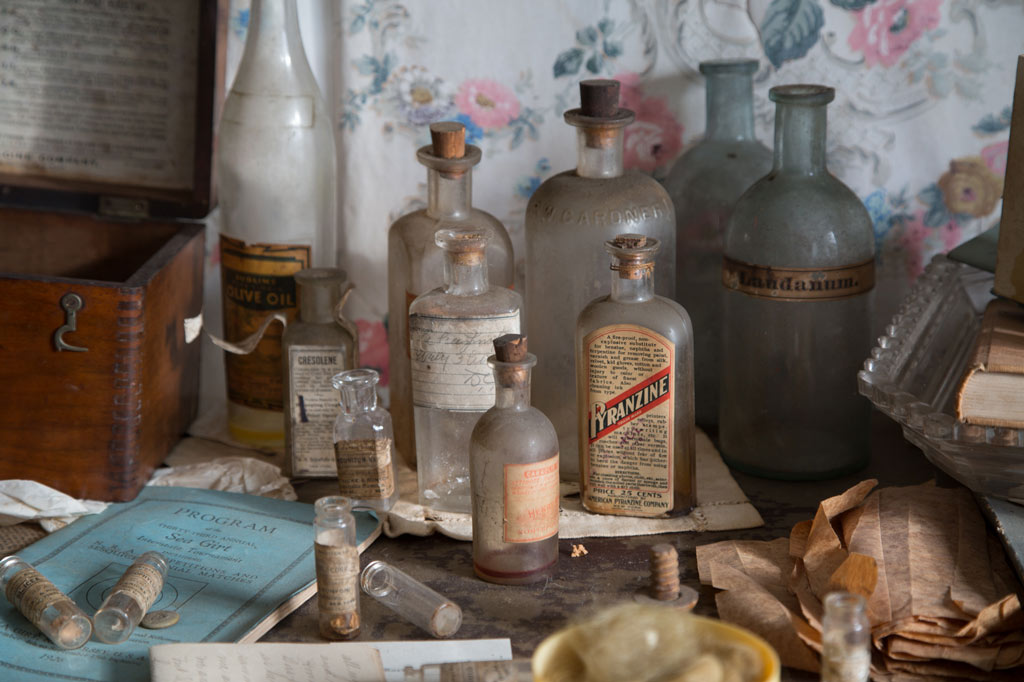
In this house, which could be considered a time capsule, many other objects were discovered. Among them are several old bottles, some of which had medicine, pantry staples, and other substances. The question is, what is the real value of these items?
For example, to determine the accurate value of a bottle, there are many aspects to be considered, including age, condition, design, rarity and historical significance. Even when a bottle is not a rarity, some people might find it interesting because collecting bottles has become a popular hobby.
Some of these items have already been taken by collectors to determine their true value and find out if there are treasures among them. Getting an idea of the bottle’s value helps, especially if someone wishes to exchange it or sell it at a fair price.
16. Colorful accents
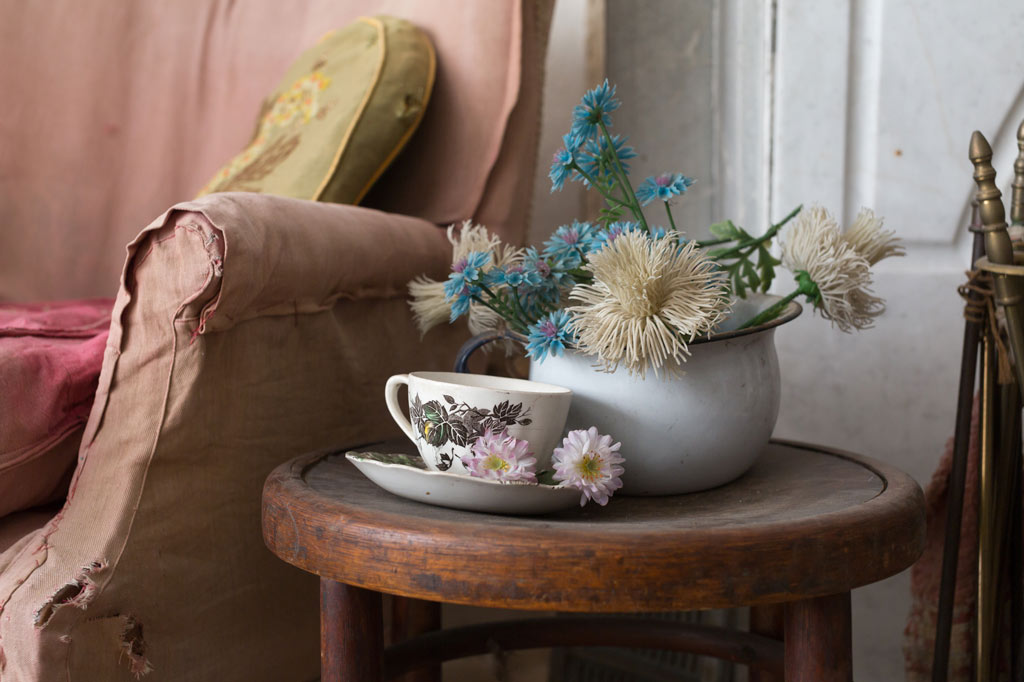
For some, finding abandoned places holds a deep fascination. Such is the case of Bryan Sansivero, who has dedicated his life to finding hidden places and bringing them back to life by revealing the lifestyle of people who are no longer among us.
In this image, which looks like a still-life painting, there is a tea pot and a cup with vivid, colorful plastic flowers. Maybe this little nook was one of Marion Carll’s favorites as it’s so neatly decorated.
Although the couch doesn’t look as good as it used to, we think it makes for an ideal spot to pleasantly read a nice book or have a warm cup of tea in the afternoon.
17. The rest of the farm
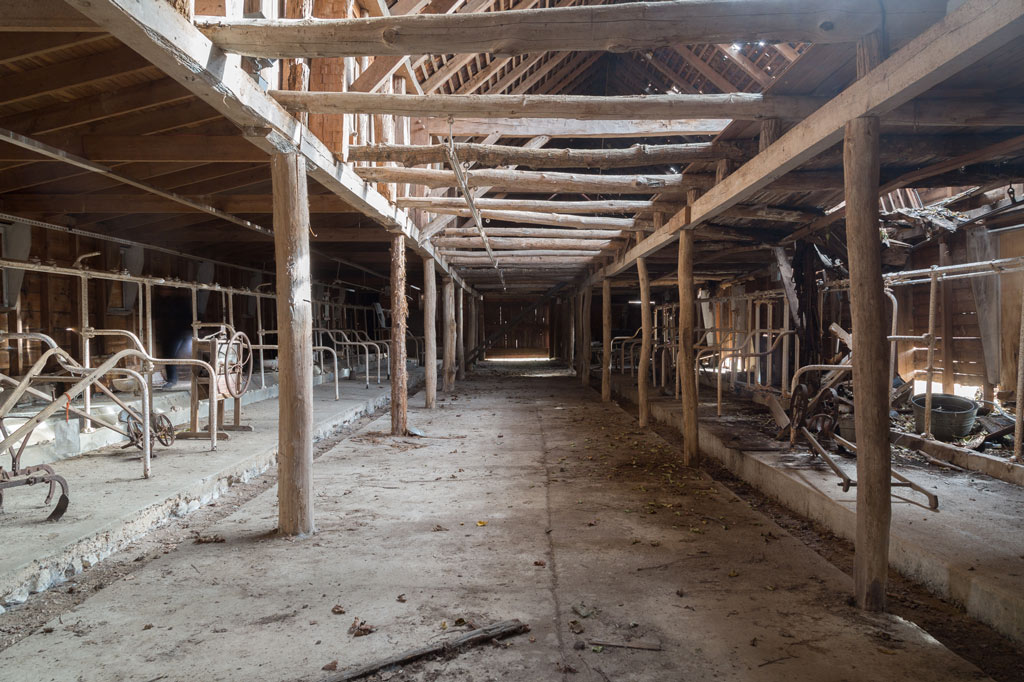
The Marion Carll Farm is one of the last historic farmsteads in this suburb. The large property has a house, a privy, a garage, a carriage house, a milk and smoke house, and a sheep and a horse barn.
Marion Carll’s wish was for the buildings to be used as historical museums. However, the school district has not done anything with them yet and their present condition is very poor.
Luckily, the farm is still fixable and some institutions, run by local members of the community, are presenting alternative projects to carry on its restoration to respect Carll’s wishes.
18. A cozy fireplace
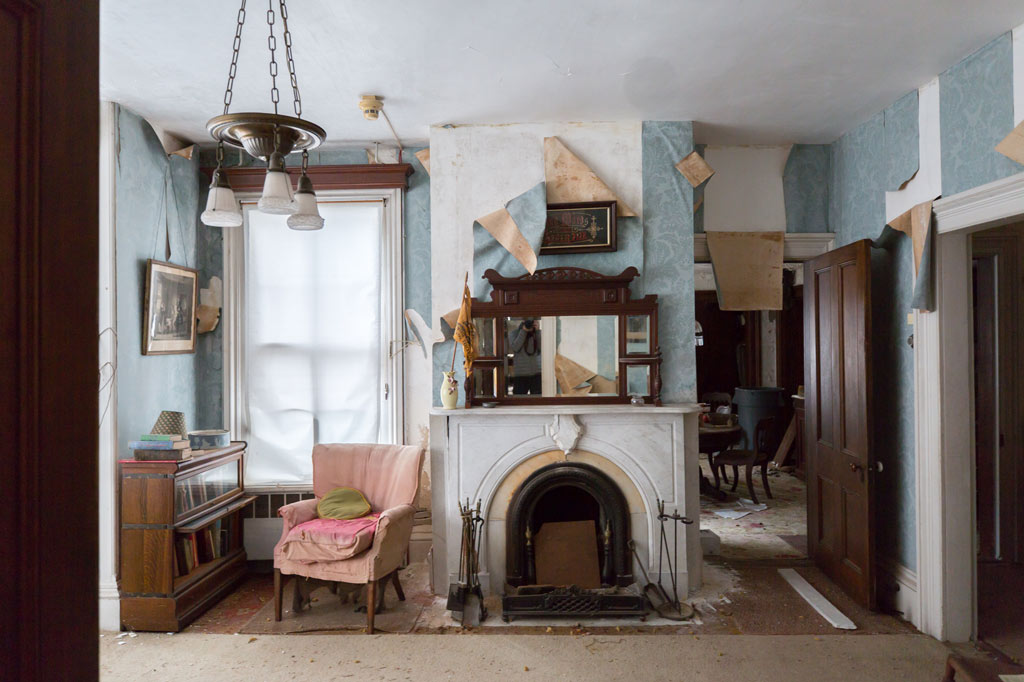
The fireplace is usually the preferred spot of families to gather and converse, especially during wintertime. Made of marble and with no signs of being damaged throughout 4 decades, the fireplace at the Carll’s home was surely one of Marion’s favorite places in the house, too.
A comfortable chair with a cozy cushion and a warm throw are facing her large collection of books and notebooks. Judging by the way every object was kept, we can easily picture Marion getting warm by the fireplace while enjoying a book, as a good teacher would do.
Except for the wallpaper, this room remained mostly untouched, just like many of the other areas.
19. An impressive book collection

A picture is worth a thousand words, or maybe even more! As we can see from these images, Marion Carll and probably many other members of her family had a love for books. Maybe these books served as an inspiration for her to become a teacher.
The truth is that the house has hundreds of books in most of the rooms. In this image, there are a couple of nightgowns, presumably of linen or cotton, as well as a couple of wicker baskets and a beautiful peacock poster, which makes us think this was a bedroom.
Maybe Marion liked to go outside, carrying books on her basket to read outdoors, feeling the fresh air on her face while enjoying one of her favorite novels.
20. A good dressmaker

Marion Carll’s creativity didn’t stop at discovering new teaching methods. She was also a great seamstress, as this picture shows. The intricate details of this blouse show patience, technique, talent and great taste.
The case with threads of different colors and needles remains open, just as she left it, showing us that she was in the middle of sewing this beautiful lace blouse.
Around the house, there are many signs that show that Marion enjoyed making her own clothes and that she preferred to use the best materials to ensure quality. This blouse is proof of that, as the fabric hasn’t been that damaged after 40 years.
21. A love for color

Even though the house didn’t change much while Marion lived in it, as she strove to maintain it as original as possible, Sansivero found a few modern items from the time she inhabited it. Among them is an air conditioner, as shown here under the window.
She also had a love for lively furniture, like this blue kitchen cabinet. The brightness of its color makes it look trendy. On top of it is a beautiful white platter with artificial fruit decor, which remains as colorful as day one: a nice feminine touch that Marion liked to add to each room.
22. Some areas are full of debris

Even though many valuable objects around the house remain in average conditions, there are also entire areas which need serious repairing and some love. This hallway with a wooden door has definitely seen better days. For example, the ceiling is falling down and the walls are coming apart.
Many cabinets were found with their drawers open and many papers lay on the floor, which could be a sign of burglary. Even so, this hallway, located on the top floor, still holds many treasures, including documents, notes and photographs that allow us to catch a glimpse of the lives of the Carlls.
23. Marion’s hidden talent
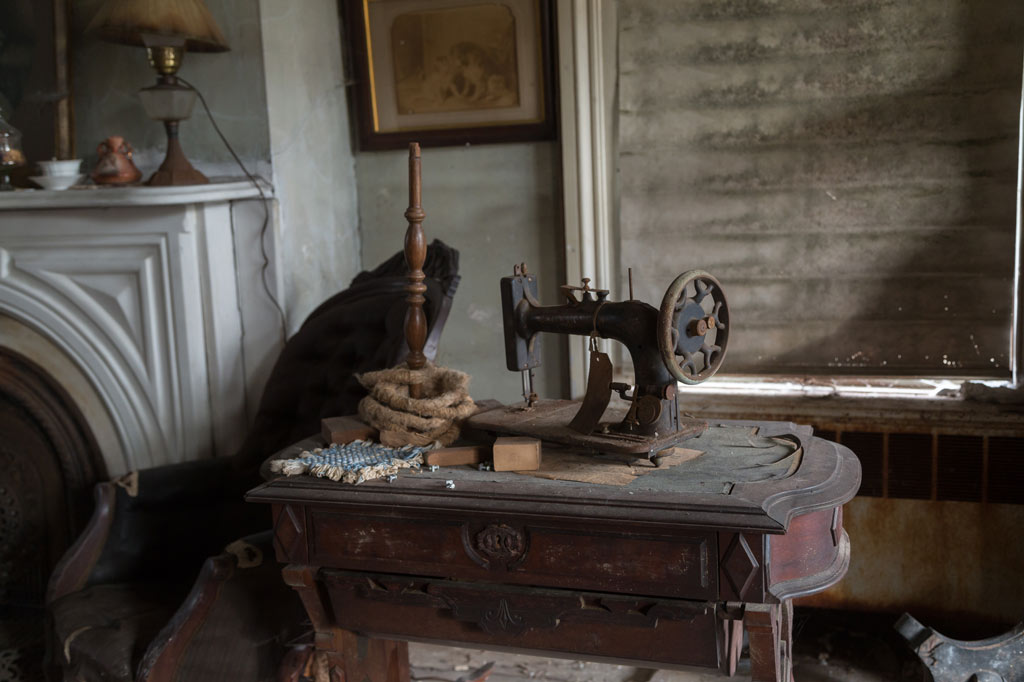
Sewing was another one of Marion’s many talents. The finding of this sewing machine, along with the crinolines, the blouse and the self-made nightgowns, confirms that sewing was Marion’s favorite hobby besides reading.
Even though this sewing machine could be sold as a collector’s item, it shows many signs of usage. The room in the picture was used as a personal atelier and it has an electrical lamp and several decorative accents.
Buying beautiful clothes back in the day was fairly expensive. Thus, Marion’s talent was an asset, as she could make herself a new wardrobe without spending too much money. Actually, the wool in this picture might have been from her own sheep farm.
24. Vintage bottles galore
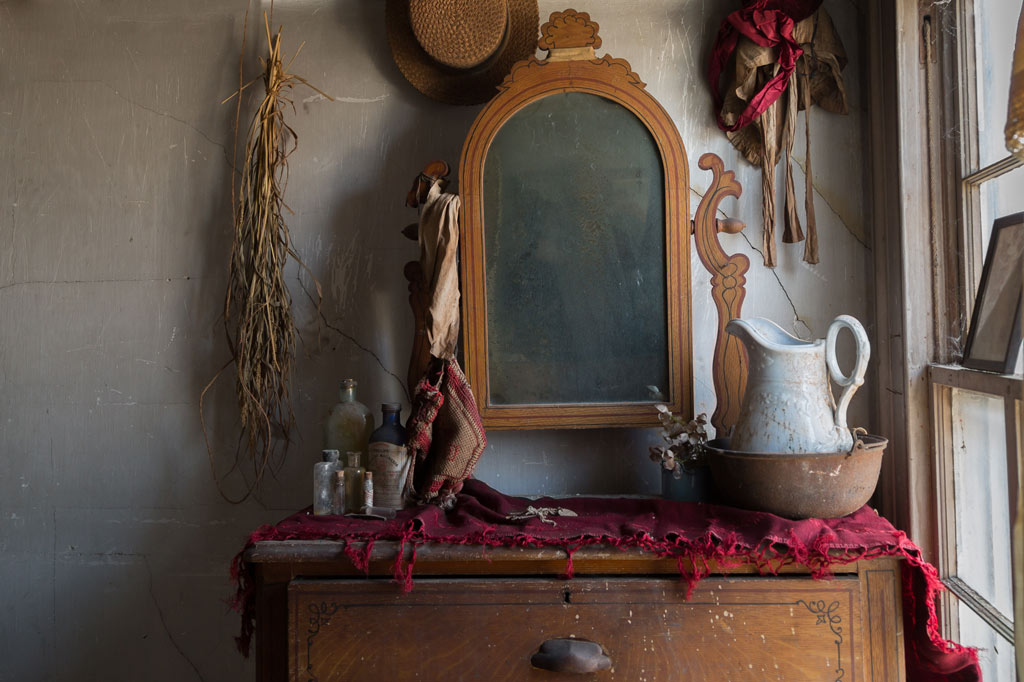
Old bottles and used flasks can make precious items! While some people love to collect objects from a different time only for the fun of it, others see it as a serious hobby that can be worth a lot of money.
For example, rare bottles of whisky are sold in auctions for thousands of dollars. Therefore, the Carll’s farmhouse might be full of treasures for those who know how to spot them.
In this picture, which only features a few flasks, there is a glass bottle of milk of magnesia, which is a laxative used to help with constipation and ease indigestion. Also depicted are a woven purse, an old mirror and a red table runner.
25. Medicine and other trinkets
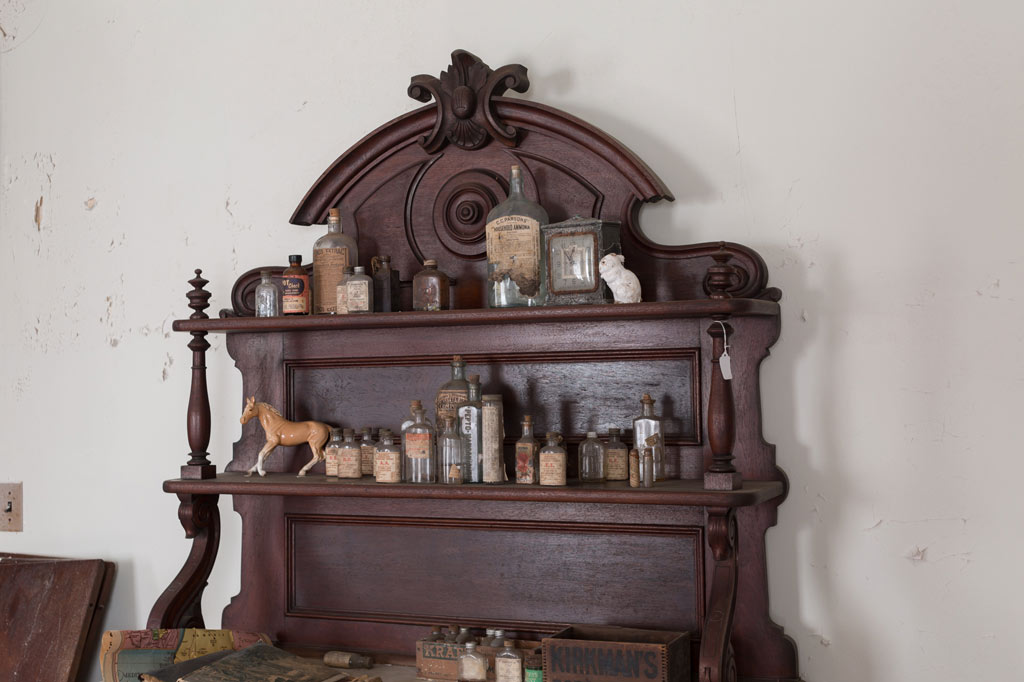
This beautiful wooden cabinet also holds many little bottles, some of which contain medicine, natural concoctions and other potions. Unluckily, most labels are too hard to read. Handmade ceramic figures, as well as two wooden boxes, are also to be found.
Given that the farm was surrounded by nature, it is safe to believe that, back in the day, many diseases were treated or prevented with alternative remedies in combination with commercial medicine.
Although there are many bottles in what appears to be a medicine cabinet, many of them do not seem to have a commercial label on them. That’s because concoctions were made out of plants, herbs and flowers, and most of them were stored in containers and labeled domestically.
26. The most intact room in the entire house
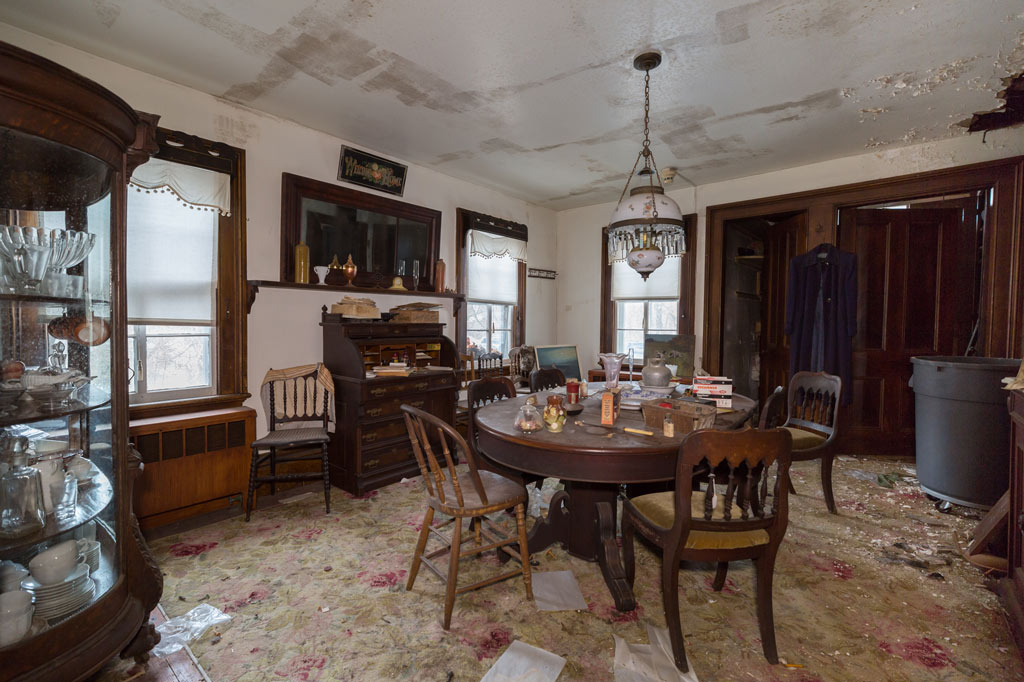
Walking into this dining room is like witnessing a day in Marion Carll’s life. Except for some debris from the ceiling, the area remains almost intact. The rug, with its vivid colors and flowery pattern, hasn’t lost its texture, and the lamp also looks untouched.
The dining table, made of strong, dark-colored wood, has mismatched chairs, although it’s clear that the original chairs are the ones with green-colored cushions. Surprisingly, they still look very robust.
The china cabinet also looks untouched by the passage of time, and its glass saucers and platters shine like new, even after 40 years.
27. A second fireplace
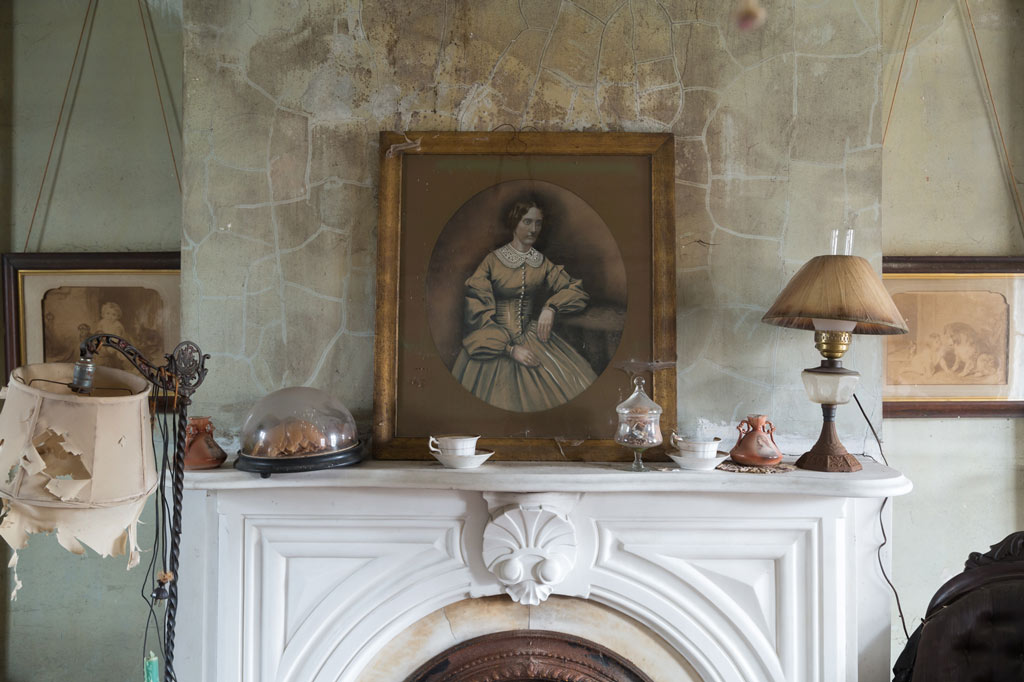
Given the size of this farmhouse, finding a second fireplace is not surprising. The quality of its materials is remarkable, as the mantle remains in great condition despite its age. Moreover, its design is delicate and elegant, yet very sober for that time.
Decorative items and a few tea cups are still sitting atop the counter, just as somebody left them there many, many years ago. A lamp, from the time that Marion lived there is also visible.
The pictures displayed on the walls are surely of her family members. In the center is a portrait of a young woman, however, it is hard to identify her exact identity.
28. Built with long-lasting materials
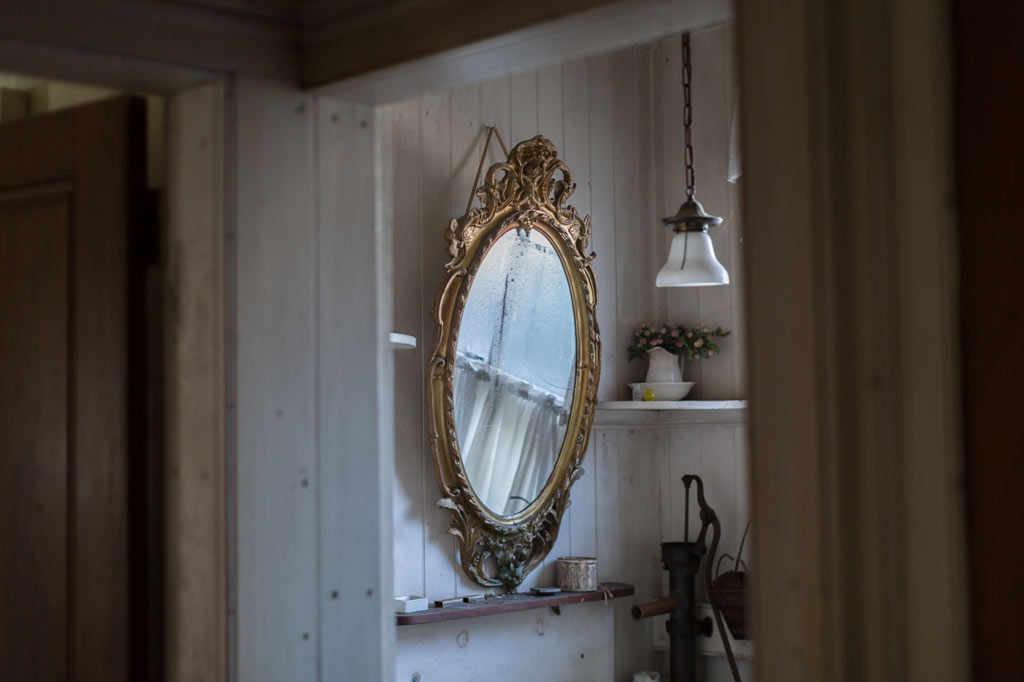
Unlike the materials used today to build houses all across America, these clapboard walls were presumably made of split oak, pine and spruce. Nowadays, more inexpensive designs imitate the form of clapboard using aluminum, vinyl and other man-made materials.
As seen in this picture, the farmstead was built using high-quality, long-lasting construction materials, which is probably why it is still standing. Not at all bad for a house that started its construction before the Civil War even began.
Although many years of abandonment have obviously taken their toll, most buildings could still be renovated to fulfill Marion’s dream of using them “as historical museums” for educational purposes.
29. A popular tonic
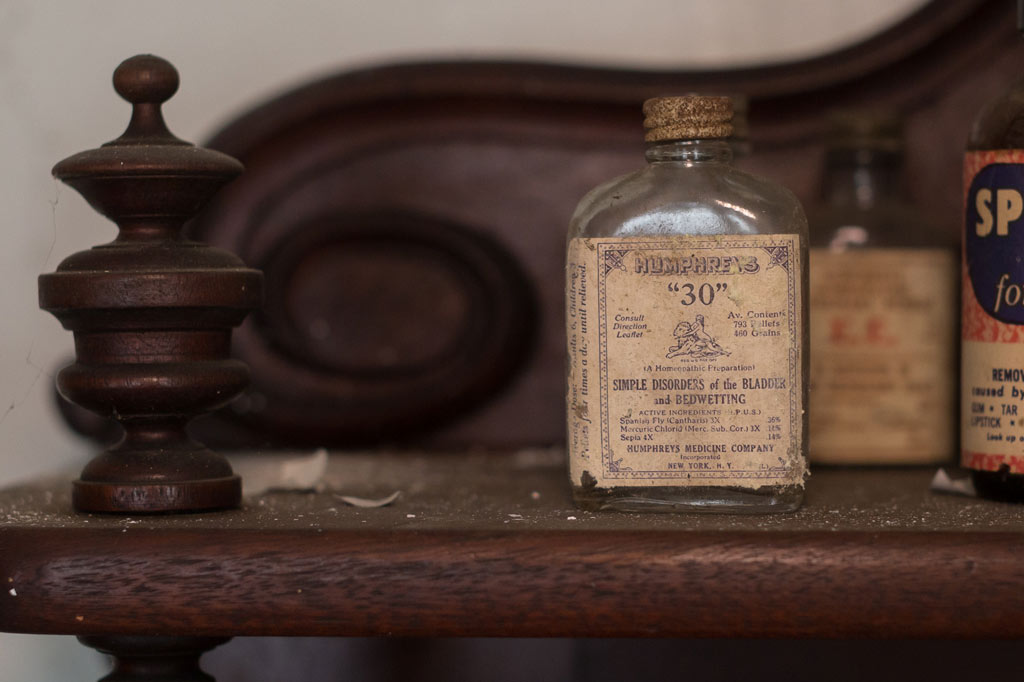
Among the many bottles found in the farmstead, there is one that stands out because of its particular benefits: a vintage bottle of Humphrey’s “30”, which has been a very popular homeopathic remedy since 1854.
This remedy is used for bed-wetting and other bladder disorders, and it comes in the form of pellets. Even though this alternative medicine may still be bought in some specialized stores, some of its ingredients are rather controversial.
Frederick K. Humphreys invented the formula and later wrote the Humphrey’s Manual of Specific Homeopathy for the Administration of Medicine and Cure of Disease, an important source among homeopaths at the time.
What do you think of this story and Sansivero’s artistic work? Let us and him know and do not forget to follow him on his Instagram https://www.instagram.com/st.severus/






